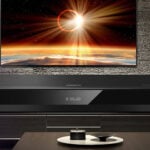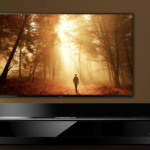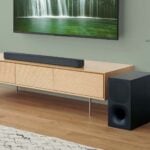Ziggy Szymczyk
Agent
- Joined
- Feb 10, 2003
- Messages
- 32
I felt this forum was the most appropriate for this review.
Repost from XM411.com:
INTRODUCTION:
A few months ago last year while going over the latest XM news and developments as I normally do each day, I recall seeing a short press release note about a company called Netstreams. It said this company was working on a new type of home audio distribution system that would also incorporate XM Satellite Radio. At the time, it did not seem like a big deal, so I didn’t pay much attention to it.
A couple months ago, I once again saw this company’s name pop up at the 2004 Consumer Electronics Show in Las Vegas while checking out XM Satellite Radio booth. Netstreams was right there in the home theater section along with three others audio distribution system manufacturers; ADA, Russound, and Crestron.
To tell you the truth, at first glance, the Netstreams display looked the least impressive of the four having just a small color touch screen and a simple control box with just a few LED’s on the front.
Netstreams at the XM Booth at CES 2004:

In this day and age, we are conditioned to think that the more brilliant blinking lights, displays and buttons, the more advanced the product. This turns out not to be the case with Netstreams and its new DigiLinX Audio Distribution System. Building on its currently available “Musica” audio distribution system, Netstreams has turned to simplicity and an open architecture. Solely relying on the common Internet TCP/IP data transfer protocol makes Netstreams’ DigiLinX home audio distribution solution so impressive and easy to install and use.
With DigiLinX, Netstreams is creating a new standard of audio distribution. Instead of having a centralized main processing unit with amplifiers and controls all in one central location, which usually winds up being pretty far from most of the speakers, the entire DigiLinX system is de-centralized in the same way that the Internet itself works. Instead of using traditional serial-type communication between various components and running pre-amplified audio over analog speaker wire from a distant control box to the speakers, DigiLinx connects all of its components with Cat5e cable. Not only are control signals run through the Cat5e cable over the TCP/IP protocol, but the key to the system is to have all audio broken into IP packets or “packetize” it. This allows for the source audio to remain preserved in its original, digital, non-compressed format all the way to your speakers. The audio is then decoded and amplified right at the speakers using the systems SpeakerLinX modules.
DETAILS, DETAILS, DETAILS…
Initially there will be five main components to the system. Here are some brief descriptions:
• AudioLinX™ - an IP-based set-top/rack-mount audio distribution/control center sophisticated non-blocking Ethernet switch. An optional networked XM® Satellite Module is designed to fit into the Digital Expansion slot in an AudioLinX

• KeyLinX™ - an IP-based keypad with enhanced LCD user interface with an integrated web server designed to interoperate with other DigiLinX products.

• SpeakerLinX™ - IP-based digital amplifiers offering programmability, control and reporting over a network. Larger models can be placed in a rack, or in a room near speakers. Smaller models are designed to mount on or in speakers.

• SwitchLinX™ - is an IGMP (Internet Group Message Protocol) enabled, multicasting, non-blocking Ethernet switch designed specifically for handling the high demands networked audio/video distribution products. An AudioLinX server, which contains SwitchLinX module, has inputs for native networked sources. Additional SwitchLinX modules can be employed to expand the network audio inputs. (picture not available)
• MediaLinX™ - an IP product that extends the number of legacy (analog) sources in a DigiLinX system. Each MediaLinX offers the capability of adding up to four (4) legacy sources with discrete IR output and power sensor for each source. (picture not available)
This may all seem quite complicated at first, but when you actually see the system in action, you realize just how simple it all is.
HOW DO I GET STARTED?
As mentioned earlier, the system in de-centralized. Meaning you do not need all of the above mentioned components to get going distributing all your audios sources throughout your home. At a minimum, you need the SwitchLinX, SpeakerLinX, your favorite pair of speakers and of course your audio source device, which in our case will be my personal favorite choice; XM Satellite Radio.
The XM Satellite Radio module is available for integration into the system in two ways. The actual XM Satellite Radio tuner will come on a card that you will be able to slide into a stand alone case called a “DEX” or Digital Expansion Slot, specifically designed just to hold one of these cards, or you will be able to slide it into the rear of the MediaLinX. With the stand alone case, the only connections required are power, antenna and a Cat5e cable.

Run the Cat5e and power cables from the SwitchLinX to the SpeakerLinX and MediaLinX. Connect your speakers to the SpeakerLinX module.
To connect other digital networked devices such as your computer with your MP3 collection, a networked hard-drive, or digital jukebox that has your music collection on it, simply run another Cat5e cable to each of these devices from the SwitchLinX.
Diagram showing a sample DigiLinX configuration:

What about my legacy non-networked devices like CD and DVD players? No problem! Simply run the coaxial digital S/PDIF or analog RCA output from each of these devices into a MediaLinX module that may be located close to a few of these devices There are also connections for IR repeaters so remote commands can be sent and received, as well as power sensors telling the system when the legacy units are on or off. You can also connect a single one of these legacy devices to your DigiLinX system through an AudioPort that can be located in any room that a SpeakerLinX module is present, using its “EIM” or Expansion Interface Module.
The AudioPort in essence provides a direct interface to input and output audio from the DigiLinX system. This leaves your DigiLinX open to scale at any time, very easily.
Sample 6-room installtion with AudioPort module allowing for input /output of local sources:

READY TO LISTEN?
Start up Internet Explorer with the latest version of Macromedia’s Flash installed on a computer, PDA or any web-enabled device that is connected to this very same network – wired or wireless! Punch in the IP address of the DigiLinX, and the system will automatically identify any and all audio source devices available, including your personal MP3 collection that may reside on a networked computer, any legacy devices attached, other type of networked storage device, and of course the XM Satellite Radio tuner.
Once the initial “search” for all audio sources is complete, you will see a display of all your speaker locations, which is where you would have located the SpeakerLinX modules. Initially, these will have IP addresses assigned to them, but you can name them anything you want like Kitchen, Living Room, Office, etc. Click on any one of these. The next screen will show available audio sources, including the XM Satellite Radio module. Select it by clicking, and the rest is more than self-explanatory. Select from the various categories and/or channels available. Select the channel, and you will see the artist and song title displayed, along with any other metadata that XM may provide.
DigiLinX system control screen fully operational on my wireless laptop in seconds, and other possible control devices.

At the top of the screen you will see a “home” link to go back to control another location in your home. More importantly, at the bottom, you will have a volume control slider bar for that specific location, and other applicable buttons such as play, pause, etc., all dependent on the source device selected for that location.
All controls respond in real-time, as they are pressed. There is no delay at all.
When using the system, as long as your music contains ID tags, and if your network has access to the internet, you will not only see the artists and song playing, but DigiLinX will go out to the CDDB database and download the album cover and any other information that may be available for that particular song. All this is again displayed in real-time on any web-enabled device you choose to control the system.
The DigiLinX control display is completely “skinnable”, meaning you can add any graphics to the display you like. You can even have the display match your home décor by matching the graphics, colors, and style to your personal tastes.
HOW DID THEY DO THAT?
The answer lies in their fundamental ability to synchronize all networked components to within 1 millisecond of each other, a solution that is patent pending. Previously, others have only been successful at synchronizing only down to about 40ms, which would not allow for such flawless playback and audio integration into a TCP/IP type intranet environment.
The digital information that is introduced into the system, whether its direct from your XM Satellite Radio receiver, your S/PDIF CD Player connection, or your digital .mp3, .wma or .wav music collection, the source material remains 100% digital without any signal loss whatsoever with the digital-to-analog conversions taking place only at the last possible moment, at most powerful component of the system, the SpeakerLinX module. The whole reason for bringing the digital decoding and amplification right to the speaker is that once the audio is analog, it is extremely susceptible to the introduction of various noise and signal loss as it travels through any length of copper wire. By placing the amplifier and decoder as close to the speaker as possible, noise and signal loss is reduced to an absolute minimum.
SpekerLinX mounted directly on the speaker. Inside SpeakerLinX, and POLK’s “Internet Ready” speaker rear with SpeakerLinX inside.

The initial SpeakerLinX modules will output 20 Watts RMS into each of two channels when released in Q2 2004. This may sound a bit weak, but when the amplifier is of such quality as these modules and is right at the speaker, it packs a lot of punch! If that is not enough, quickly following will be modules that output 50 Watts per channel, and finally a module is in the works that will drive up to 8 (that’s eight) channels at 100 Watts each! This is definitely being created with not only for 5.1 surround sound, but has enough channels for the newer 7.1 surround audio.
Other modules in the works include one specifically designed for large speaker clusters that will not require the speaker impedances to match. This is very important when dealing with larger numbers of speakers as with most current home amplifiers, it the speaker/amplifier impedance do not match up, amplifier damage may occur. This takes the guess work of speaker impedance out of the loop making installation that much easier, and is a perfect solution for commercial in-store applications. This will be especially useful when installing XM Satellite Radio in a business setting like a store, office, or bar.
Another module being worked on is a “Quad Tuner”. This future tuner card similar to the XM Satellite Radio module will contain a total of four tuners on it. It will have analog FM and AM, as well as one of each of the new digital FM and AM tuners. This will give you the ability to receive any existing or new digital terrestrial radio format with just one tuner card.
THEORIES:
In case some of you are wondering what the limits of this system are, let me just tell you that virtually, it has none due to its open architecture. If you do the math based on available home network IP addresses, you quickly see that the system can handle up to 1,800,000 various sources and rooms. Is that enough for you? My initial worry was what about sound quality. I began to think that as source devices and rooms are added, there just would not be enough bandwidth on the Cat5e cable to handle all this information. It was quickly brought to my attention that through the use of SwitchLinX, each and every Cat5e cable going to each source or room, only carried that specific audio information required there. The SwitchLinX is an IGMP (Internet Group Message Protocol) enabled, multicasting, non-blocking Ethernet switch, meaning its smart enough to determine where to send the audio and where to get it from avoiding any unnecessary data from being sent aimlessly over the entire network.
Another option to using the system, one which is especially useful when installing in existing construction, is the use of wireless networking. The system works just as well over an 802.11b wireless network as a Cat5e hardwired network, or uses both types concurrently. In theory, under perfect conditions, you can run approximately 6-7 fully uncompressed audio sources/rooms over each 10 Mbit/sec 802.11b channel. Since there are 11 available wireless channels, your theoretical limitation is approximately 65 various wireless sources/rooms. Although this may sound like a limiting factor for a purely wireless installation, the DigiLinX system is already capable of upgrading to the newer and much faster “G” standard, increasing the theoretical limitation by at least ten fold.
CONCLUSION:
The DigiLinX system handles audio flawlessly, with the purest sound information possible reproduced right at the speaker. What more can anyone ask for? The other aspect of the system that gets me excited is its open architecture using TCP/IP and web enabled devices to control everything. This allows for the easiest of integration into any computer environment and also other systems that use home networks to function, which in the future will be everything from your door bell, to your refrigerator.
Businesses would greatly benefit from this system in conjunction with XM Satellite Radio. With an XM Satellite radio commercial subscription at only $24.99 per month including all required music industry royalties; this is an unbeatable music distribution system for any sized facility.
In my view, any home or apartment with more than one audio listening room would greatly benefit, not to mention all those large offices, bars, clubs, stores, etc.
www.netstreams.com
Interested in XM Satellite Radio? Visit us at www.xm411.com
I will do my best to answer your questions here, and have already begun answering some questions at:
http://www.xm411.com/phpbb/viewtopic.php?t=1313

Repost from XM411.com:
INTRODUCTION:
A few months ago last year while going over the latest XM news and developments as I normally do each day, I recall seeing a short press release note about a company called Netstreams. It said this company was working on a new type of home audio distribution system that would also incorporate XM Satellite Radio. At the time, it did not seem like a big deal, so I didn’t pay much attention to it.
A couple months ago, I once again saw this company’s name pop up at the 2004 Consumer Electronics Show in Las Vegas while checking out XM Satellite Radio booth. Netstreams was right there in the home theater section along with three others audio distribution system manufacturers; ADA, Russound, and Crestron.
To tell you the truth, at first glance, the Netstreams display looked the least impressive of the four having just a small color touch screen and a simple control box with just a few LED’s on the front.
Netstreams at the XM Booth at CES 2004:
In this day and age, we are conditioned to think that the more brilliant blinking lights, displays and buttons, the more advanced the product. This turns out not to be the case with Netstreams and its new DigiLinX Audio Distribution System. Building on its currently available “Musica” audio distribution system, Netstreams has turned to simplicity and an open architecture. Solely relying on the common Internet TCP/IP data transfer protocol makes Netstreams’ DigiLinX home audio distribution solution so impressive and easy to install and use.
With DigiLinX, Netstreams is creating a new standard of audio distribution. Instead of having a centralized main processing unit with amplifiers and controls all in one central location, which usually winds up being pretty far from most of the speakers, the entire DigiLinX system is de-centralized in the same way that the Internet itself works. Instead of using traditional serial-type communication between various components and running pre-amplified audio over analog speaker wire from a distant control box to the speakers, DigiLinx connects all of its components with Cat5e cable. Not only are control signals run through the Cat5e cable over the TCP/IP protocol, but the key to the system is to have all audio broken into IP packets or “packetize” it. This allows for the source audio to remain preserved in its original, digital, non-compressed format all the way to your speakers. The audio is then decoded and amplified right at the speakers using the systems SpeakerLinX modules.
DETAILS, DETAILS, DETAILS…
Initially there will be five main components to the system. Here are some brief descriptions:
• AudioLinX™ - an IP-based set-top/rack-mount audio distribution/control center sophisticated non-blocking Ethernet switch. An optional networked XM® Satellite Module is designed to fit into the Digital Expansion slot in an AudioLinX
• KeyLinX™ - an IP-based keypad with enhanced LCD user interface with an integrated web server designed to interoperate with other DigiLinX products.
• SpeakerLinX™ - IP-based digital amplifiers offering programmability, control and reporting over a network. Larger models can be placed in a rack, or in a room near speakers. Smaller models are designed to mount on or in speakers.
• SwitchLinX™ - is an IGMP (Internet Group Message Protocol) enabled, multicasting, non-blocking Ethernet switch designed specifically for handling the high demands networked audio/video distribution products. An AudioLinX server, which contains SwitchLinX module, has inputs for native networked sources. Additional SwitchLinX modules can be employed to expand the network audio inputs. (picture not available)
• MediaLinX™ - an IP product that extends the number of legacy (analog) sources in a DigiLinX system. Each MediaLinX offers the capability of adding up to four (4) legacy sources with discrete IR output and power sensor for each source. (picture not available)
This may all seem quite complicated at first, but when you actually see the system in action, you realize just how simple it all is.
HOW DO I GET STARTED?
As mentioned earlier, the system in de-centralized. Meaning you do not need all of the above mentioned components to get going distributing all your audios sources throughout your home. At a minimum, you need the SwitchLinX, SpeakerLinX, your favorite pair of speakers and of course your audio source device, which in our case will be my personal favorite choice; XM Satellite Radio.
The XM Satellite Radio module is available for integration into the system in two ways. The actual XM Satellite Radio tuner will come on a card that you will be able to slide into a stand alone case called a “DEX” or Digital Expansion Slot, specifically designed just to hold one of these cards, or you will be able to slide it into the rear of the MediaLinX. With the stand alone case, the only connections required are power, antenna and a Cat5e cable.
Run the Cat5e and power cables from the SwitchLinX to the SpeakerLinX and MediaLinX. Connect your speakers to the SpeakerLinX module.
To connect other digital networked devices such as your computer with your MP3 collection, a networked hard-drive, or digital jukebox that has your music collection on it, simply run another Cat5e cable to each of these devices from the SwitchLinX.
Diagram showing a sample DigiLinX configuration:
What about my legacy non-networked devices like CD and DVD players? No problem! Simply run the coaxial digital S/PDIF or analog RCA output from each of these devices into a MediaLinX module that may be located close to a few of these devices There are also connections for IR repeaters so remote commands can be sent and received, as well as power sensors telling the system when the legacy units are on or off. You can also connect a single one of these legacy devices to your DigiLinX system through an AudioPort that can be located in any room that a SpeakerLinX module is present, using its “EIM” or Expansion Interface Module.
The AudioPort in essence provides a direct interface to input and output audio from the DigiLinX system. This leaves your DigiLinX open to scale at any time, very easily.
Sample 6-room installtion with AudioPort module allowing for input /output of local sources:
READY TO LISTEN?
Start up Internet Explorer with the latest version of Macromedia’s Flash installed on a computer, PDA or any web-enabled device that is connected to this very same network – wired or wireless! Punch in the IP address of the DigiLinX, and the system will automatically identify any and all audio source devices available, including your personal MP3 collection that may reside on a networked computer, any legacy devices attached, other type of networked storage device, and of course the XM Satellite Radio tuner.
Once the initial “search” for all audio sources is complete, you will see a display of all your speaker locations, which is where you would have located the SpeakerLinX modules. Initially, these will have IP addresses assigned to them, but you can name them anything you want like Kitchen, Living Room, Office, etc. Click on any one of these. The next screen will show available audio sources, including the XM Satellite Radio module. Select it by clicking, and the rest is more than self-explanatory. Select from the various categories and/or channels available. Select the channel, and you will see the artist and song title displayed, along with any other metadata that XM may provide.
DigiLinX system control screen fully operational on my wireless laptop in seconds, and other possible control devices.
At the top of the screen you will see a “home” link to go back to control another location in your home. More importantly, at the bottom, you will have a volume control slider bar for that specific location, and other applicable buttons such as play, pause, etc., all dependent on the source device selected for that location.
All controls respond in real-time, as they are pressed. There is no delay at all.
When using the system, as long as your music contains ID tags, and if your network has access to the internet, you will not only see the artists and song playing, but DigiLinX will go out to the CDDB database and download the album cover and any other information that may be available for that particular song. All this is again displayed in real-time on any web-enabled device you choose to control the system.
The DigiLinX control display is completely “skinnable”, meaning you can add any graphics to the display you like. You can even have the display match your home décor by matching the graphics, colors, and style to your personal tastes.
HOW DID THEY DO THAT?
The answer lies in their fundamental ability to synchronize all networked components to within 1 millisecond of each other, a solution that is patent pending. Previously, others have only been successful at synchronizing only down to about 40ms, which would not allow for such flawless playback and audio integration into a TCP/IP type intranet environment.
The digital information that is introduced into the system, whether its direct from your XM Satellite Radio receiver, your S/PDIF CD Player connection, or your digital .mp3, .wma or .wav music collection, the source material remains 100% digital without any signal loss whatsoever with the digital-to-analog conversions taking place only at the last possible moment, at most powerful component of the system, the SpeakerLinX module. The whole reason for bringing the digital decoding and amplification right to the speaker is that once the audio is analog, it is extremely susceptible to the introduction of various noise and signal loss as it travels through any length of copper wire. By placing the amplifier and decoder as close to the speaker as possible, noise and signal loss is reduced to an absolute minimum.
SpekerLinX mounted directly on the speaker. Inside SpeakerLinX, and POLK’s “Internet Ready” speaker rear with SpeakerLinX inside.
The initial SpeakerLinX modules will output 20 Watts RMS into each of two channels when released in Q2 2004. This may sound a bit weak, but when the amplifier is of such quality as these modules and is right at the speaker, it packs a lot of punch! If that is not enough, quickly following will be modules that output 50 Watts per channel, and finally a module is in the works that will drive up to 8 (that’s eight) channels at 100 Watts each! This is definitely being created with not only for 5.1 surround sound, but has enough channels for the newer 7.1 surround audio.
Other modules in the works include one specifically designed for large speaker clusters that will not require the speaker impedances to match. This is very important when dealing with larger numbers of speakers as with most current home amplifiers, it the speaker/amplifier impedance do not match up, amplifier damage may occur. This takes the guess work of speaker impedance out of the loop making installation that much easier, and is a perfect solution for commercial in-store applications. This will be especially useful when installing XM Satellite Radio in a business setting like a store, office, or bar.
Another module being worked on is a “Quad Tuner”. This future tuner card similar to the XM Satellite Radio module will contain a total of four tuners on it. It will have analog FM and AM, as well as one of each of the new digital FM and AM tuners. This will give you the ability to receive any existing or new digital terrestrial radio format with just one tuner card.
THEORIES:
In case some of you are wondering what the limits of this system are, let me just tell you that virtually, it has none due to its open architecture. If you do the math based on available home network IP addresses, you quickly see that the system can handle up to 1,800,000 various sources and rooms. Is that enough for you? My initial worry was what about sound quality. I began to think that as source devices and rooms are added, there just would not be enough bandwidth on the Cat5e cable to handle all this information. It was quickly brought to my attention that through the use of SwitchLinX, each and every Cat5e cable going to each source or room, only carried that specific audio information required there. The SwitchLinX is an IGMP (Internet Group Message Protocol) enabled, multicasting, non-blocking Ethernet switch, meaning its smart enough to determine where to send the audio and where to get it from avoiding any unnecessary data from being sent aimlessly over the entire network.
Another option to using the system, one which is especially useful when installing in existing construction, is the use of wireless networking. The system works just as well over an 802.11b wireless network as a Cat5e hardwired network, or uses both types concurrently. In theory, under perfect conditions, you can run approximately 6-7 fully uncompressed audio sources/rooms over each 10 Mbit/sec 802.11b channel. Since there are 11 available wireless channels, your theoretical limitation is approximately 65 various wireless sources/rooms. Although this may sound like a limiting factor for a purely wireless installation, the DigiLinX system is already capable of upgrading to the newer and much faster “G” standard, increasing the theoretical limitation by at least ten fold.
CONCLUSION:
The DigiLinX system handles audio flawlessly, with the purest sound information possible reproduced right at the speaker. What more can anyone ask for? The other aspect of the system that gets me excited is its open architecture using TCP/IP and web enabled devices to control everything. This allows for the easiest of integration into any computer environment and also other systems that use home networks to function, which in the future will be everything from your door bell, to your refrigerator.
Businesses would greatly benefit from this system in conjunction with XM Satellite Radio. With an XM Satellite radio commercial subscription at only $24.99 per month including all required music industry royalties; this is an unbeatable music distribution system for any sized facility.
In my view, any home or apartment with more than one audio listening room would greatly benefit, not to mention all those large offices, bars, clubs, stores, etc.
www.netstreams.com
Interested in XM Satellite Radio? Visit us at www.xm411.com
I will do my best to answer your questions here, and have already begun answering some questions at:
http://www.xm411.com/phpbb/viewtopic.php?t=1313





